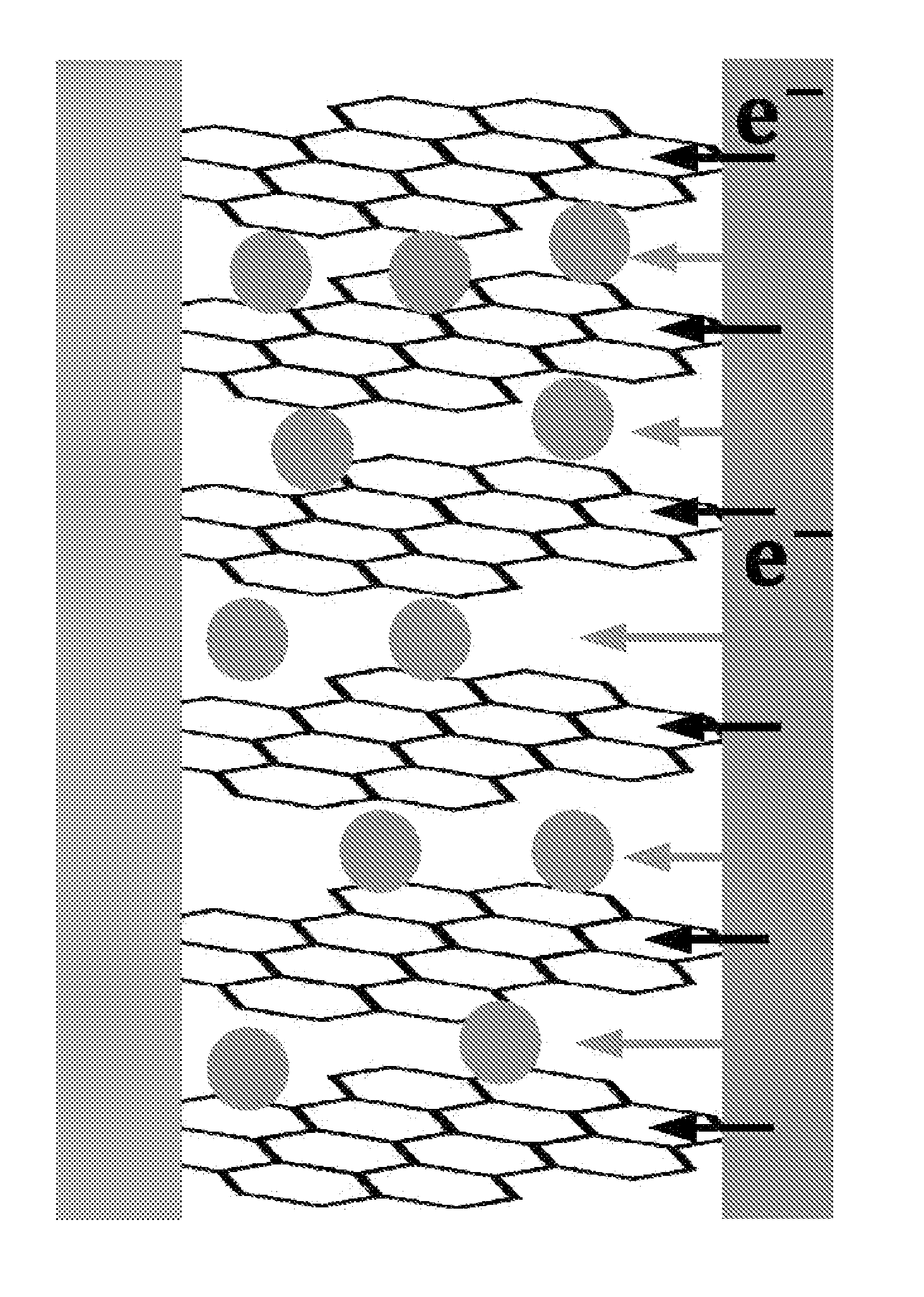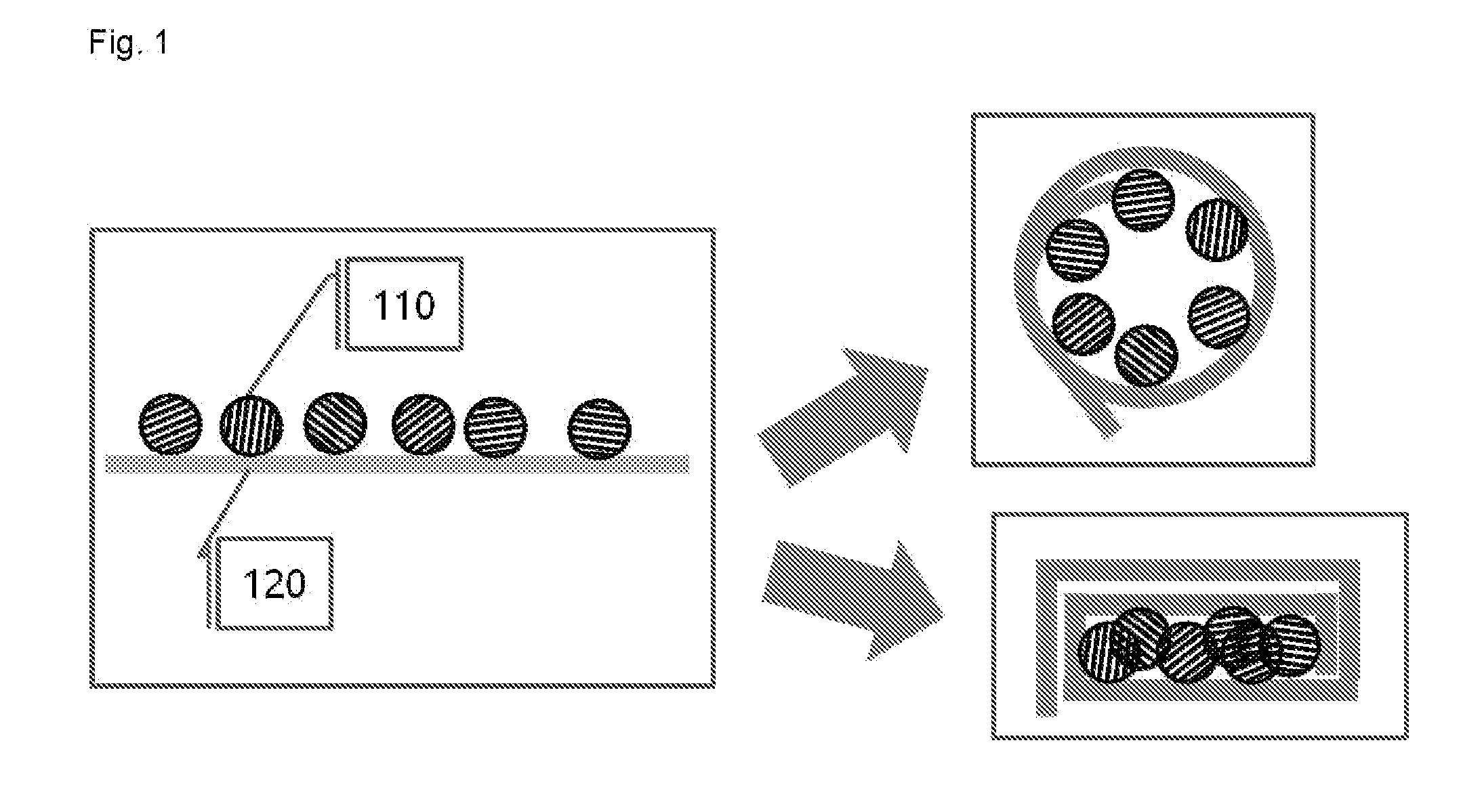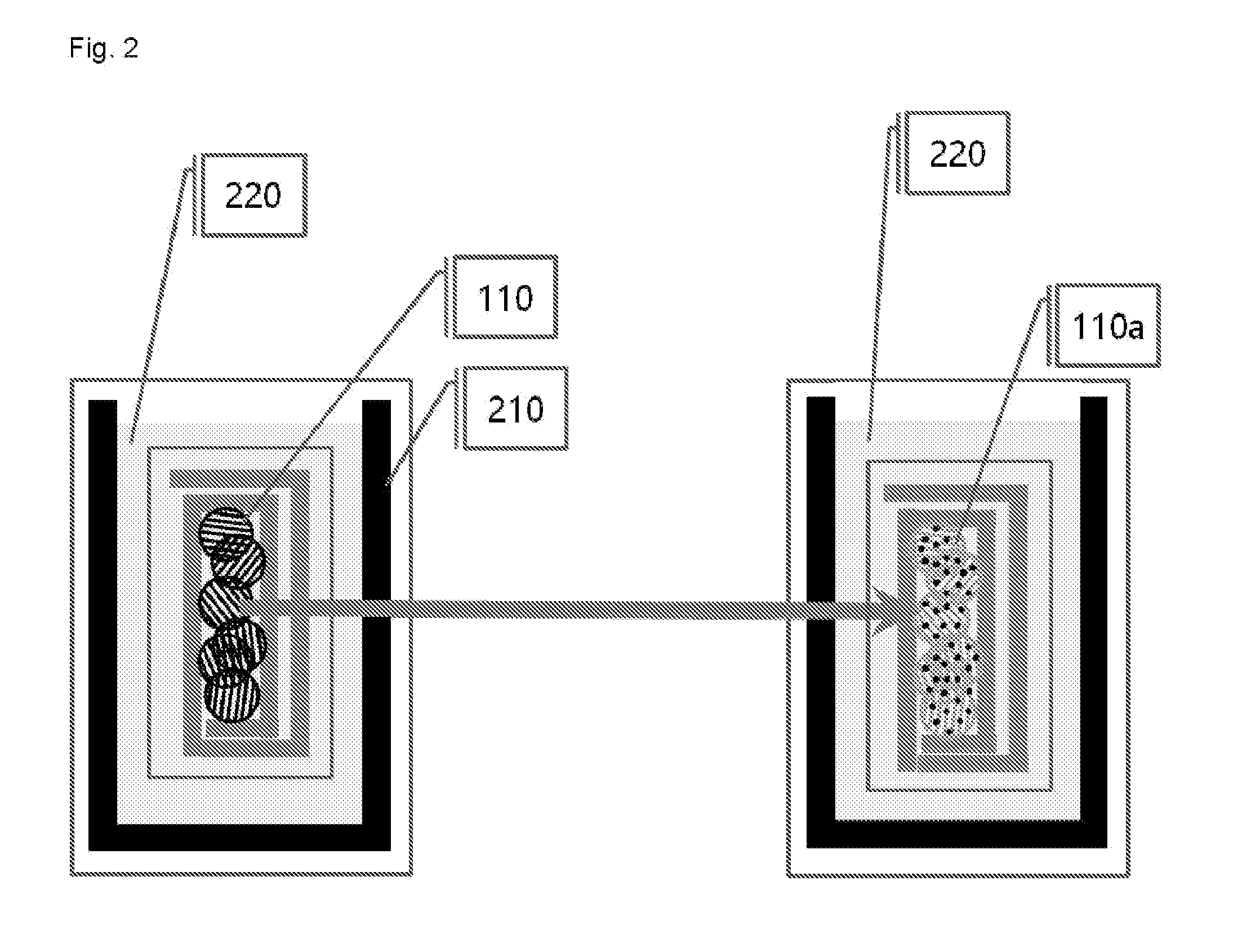Method for preparation of graphene using spontaneous process
a spontaneous process and graphene technology, applied in the field of spontaneous process preparation of graphene, can solve the problems of low unit cost of preparation in the preparation of graphene using graphite as a raw material, difficulty in performing the process, and high final product price, and achieves low defect or impurity, low cost, and low cost
- Summary
- Abstract
- Description
- Claims
- Application Information
AI Technical Summary
Benefits of technology
Problems solved by technology
Method used
Image
Examples
example 1
[0089]An artificial graphite (Lot No.: 282863, Particle size: 6 was mixed as an electrolyte were used.
[0090]In a glove box under argon atmosphere, graphite was uniformly applied on the lithium foil, and graphite was brought into surface contact with the lithium metal by rolling the lithium foil so as to form an angle. Then, the lump of graphite and lithium was put into the electrolyte, and was left to stand for 30 minutes. Thereafter, the lump of graphite and lithium was taken out from the electrolyte and stretched out, graphite (graphite intercalation compound) co-intercalated by lithium and solvent molecules was collected and placed into a vial, and the vial was sealed, and then taken out from the glove box.
[0091]Immediately after the vial taken out from the glove box was opened, the graphite intercalation compound was taken out and placed into a reactor containing water, and the resulting mixture was stirred for 1 minute. The stirred solution (a graphene solution dispersed in wat...
example 2
[0094]An artificial graphite (Lot No.: 282863, Particle size: 6 was mixed as an electrolyte were used.
[0095]In a glove box under argon atmosphere, graphite was uniformly applied on the lithium foil, and graphite was brought into surface contact with lithium by rolling the lithium into a round shape. Then, the lump of graphite and lithium was put into the electrolyte, and was left to stand for 6 minutes. Thereafter, the lump of graphite and lithium was taken out from the electrolyte and stretched out, graphite (graphite intercalation compound) co-intercalated by lithium and solvent molecules was collected and placed into a vial, and the vial was sealed, and then taken out from the glove box.
[0096]Immediately after the vial taken out from the glove box was opened, the graphite intercalation compound was taken out and placed into a reactor containing water, and the resulting mixture was stirred for 30 minutes. The stirred solution (a graphene solution dispersed in water) was filtered i...
example 3
[0099]An artificial graphite (Lot No.: 282863, Particle size: 6 was mixed as an electrolyte were used.
[0100]In a glove box under argon atmosphere, graphite was uniformly applied on the lithium foil, and graphite was brought into surface contact with lithium by rolling the lithium so as to form an angle. Then, the lump of graphite and lithium was put into the electrolyte, and was left to stand for 12 minutes. Thereafter, the lump of graphite and lithium was taken out from the electrolyte and stretched out, graphite (graphite intercalation compound) co-intercalated by lithium and solvent molecules was collected and placed into a vial, and the vial was sealed, and then taken out from the glove box.
[0101]Immediately after the vial taken out from the glove box was opened, the graphite intercalation compound was taken out and placed into a reactor containing water, and the resulting mixture was stirred for 6 minutes. The stirred solution (a graphene solution dispersed in water) was filter...
PUM
| Property | Measurement | Unit |
|---|---|---|
| pore size | aaaaa | aaaaa |
| temperature | aaaaa | aaaaa |
| pore size | aaaaa | aaaaa |
Abstract
Description
Claims
Application Information
 Login to View More
Login to View More - R&D
- Intellectual Property
- Life Sciences
- Materials
- Tech Scout
- Unparalleled Data Quality
- Higher Quality Content
- 60% Fewer Hallucinations
Browse by: Latest US Patents, China's latest patents, Technical Efficacy Thesaurus, Application Domain, Technology Topic, Popular Technical Reports.
© 2025 PatSnap. All rights reserved.Legal|Privacy policy|Modern Slavery Act Transparency Statement|Sitemap|About US| Contact US: help@patsnap.com



